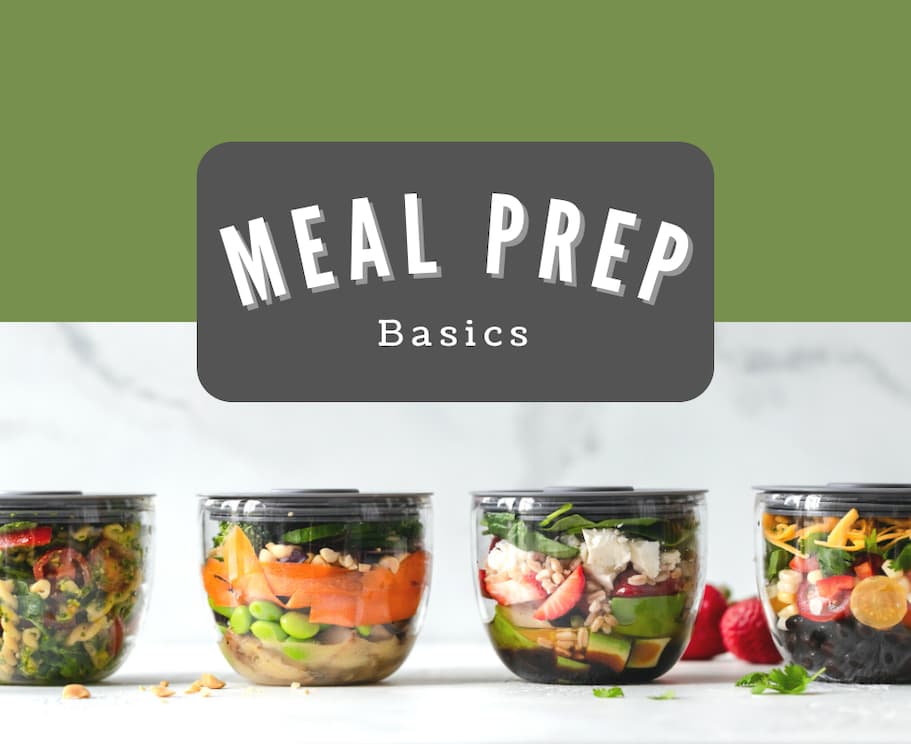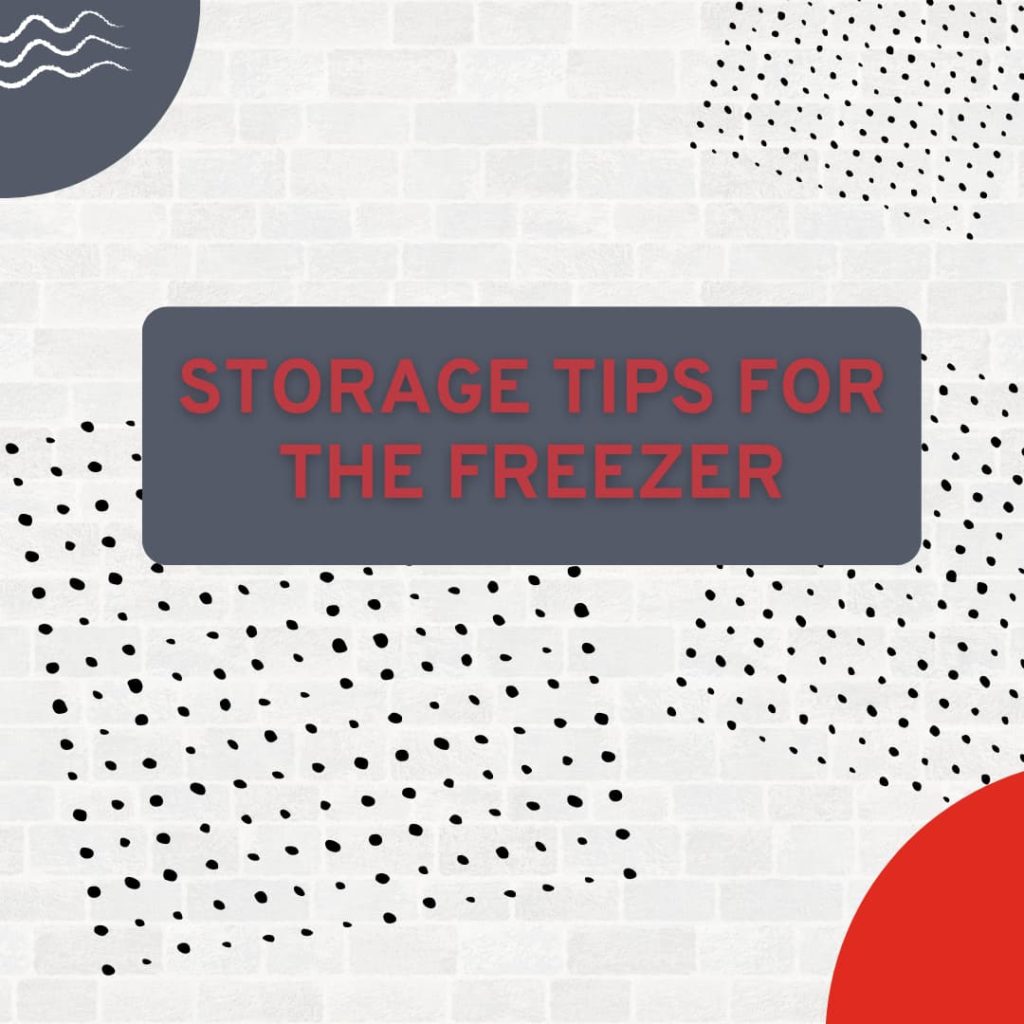
a nutrition series by Michelle Chappel
Meal prep can have many meanings. It doesn’t have to be hard, and it doesn’t have to mean you’re eating the same food day after day.
It can mean you’re putting a little forethought into what you’ll eat and setting yourself up for easy meals when things get busy. It’s a great way to stay on track, keeping yourself from running out of food, and falling for fast food or take-out options. With the cost of living rising, saving a few extra dollars by cooking at home is worth the effort of meal prep.
If you’re new to meal prep or haven’t successfully incorporated it into your routine yet then stay tuned, because today I’m going to share some easy ways to get started.
I like to start with cleaning out the fridge.
This gives you a fresh start plus it’s a good way to take inventory of everything you’ve tucked away. Dig out all those old half-empty jars of condiments and give your veggie drawer a good scrub out. If you read my farmers market post, you’ll know that veggies and fruit like to be separate and they both like different humidity levels. So, if you have a bunch of wilted shriveled beets you never got around to cooking (guilty) toss them right into your compost pile, and let’s start this with a clean slate.
The next place I like to take stock of is the pantry;
sort through and use up the last of random things. I like to keep a few grain options on hand, a can or two of beans or dried beans if you prefer, a can or two of coconut milk, and tomato paste. You’ll also want to make sure you have chicken or vegetable stock on hand or, better yet, keep a stash of homemade bone broth in the freezer. I also keep a bottle of quality olive oil, some vinegar (I use unfiltered apple cider vinegar for almost all vinegar recipes) and some liquid aminos.
Back to the fridge and the freezer!
Keeping a few staples here can make for easy meal prep as well. Frozen veggies are fast and great for preparing single servings or switching up one of your prepared meals. Frozen meatballs are handy for single-serving meal prep as well. I’m a big fan of frozen berries for mixing into breakfast and smoothies. Save some space in your freezer for those large-batch meals. Soups and even some grain dishes freeze nicely and are great for rotating into your meal plan.
Alright, we’re now stocked with the basics. Let’s get into a few ways you can prepare these fresh ingredients for your weekly meal. You’ll now need to make your meal plan. No, you don’t need a nutritionist to count out all the calories and measure things down to the ounce. You just need some ideas. Ask yourself, “how many times can I eat the same thing?” Some people can eat the same lunch all week. Others will have a two-time max. Both are fine. Let’s say you don’t want to repeat any of the same meals twice. You can still prepare the ingredients ahead and then mix and match to make different meals from those ingredients. It all starts with that plan, though. Then the shopping list. Don’t worry I’ll be sure to follow up this post with some helpful breakfast, lunch, and dinner ideas. I tend to build meals around a protein, veggie, and a starch.
Once you have your ingredients, set aside a little time to prepare as much of it ahead as you can. Some people like to do it all in one day, “Meal prep Sunday”, and be ready for the week, while others might have an extra hour here and there and prep a couple of times throughout the week. Either way works.
Cook your grains ahead.
Make smaller batches if you only need 1-2 servings (frozen rice or boil in a bag are great for quick, small servings). Cook a larger pot of heartier grains like brown rice, farro, or wheat berries and divide it up into servings or freeze half for another time. Keep grains simple. If you like to cook your quinoa with onion, garlic, and seasonings, keep them basic so it can be made Mediterranean, Mexican, or Italian at any meal. I’m a fan of rice and beans. But sometimes I don’t want to have them over and over. Cooking the beans separately and mixing them as needed is another way to keep things changing from meal to meal. If you prefer to cook dried beans, I’d cook them and lentils at the same time you’re cooking those grains. If you have one pot simmering why not make it two?
Chop up the veggies!
Dice, slice and store those fresh veggies. Keep raw veggies in separate containers where you can add them to your grains and protein of choice with ease. You can cook up whatever veggies ahead of time, too. Sauté a mix of veggies for a stir-fry type dish, grill some zucchini, or roast up a mix of root veggies. I tend to go for a cooked veg and some raw prepped. That way I can always cook up the raw options later if I decide to.
When it comes to meat, I’ll either cook up a couple chicken breasts and divide them out for a few meals, cook up some seasoned ground turkey, or go for frozen meatballs. If you have the beans on hand, you can easily go meatless. I almost forgot: if you like fish, having a couple of cans or pouches of tuna, salmon, or herring (my personal favorite) is another easy pantry staple.
If you’re someone who can eat the same thing for multiple days, cooking up a batch of one-pot meals, either Instapot, crockpot, or skillet is a super easy way to have your meat and veg option that you can have over grains, a bed of kale or in a wrap.
You see it doesn’t have to be overly complicated.
Get yourself a variety of quality (preferable glass if you are reheating) storage containers and dish things up.
A well-stocked fridge can set up you for the rest of the week, saving you time and money.



